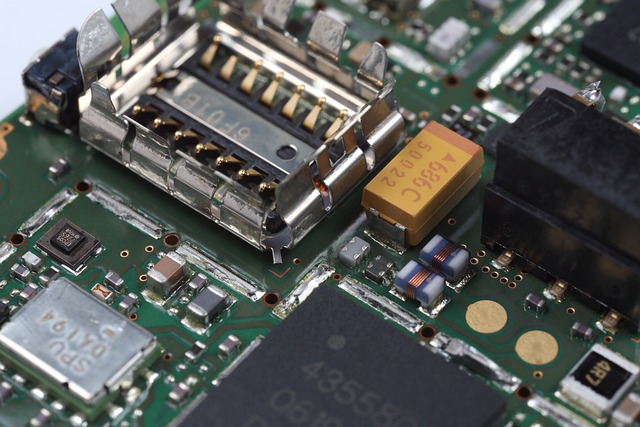What Is the Potential of Brain-to-Brain Interfaces?
Think of BBIs as the ultimate wireless communication. Instead of speaking or texting, you could send your thoughts and emotions directly. It’s like having a mental walkie-talkie with someone else. This isn’t about mere telepathy; it’s about creating a direct link between minds, potentially revolutionizing how we interact.
So, what could this mean for us? For starters, BBIs could dramatically change the way we share knowledge. Imagine learning a new skill or concept simply by experiencing someone else’s expertise instantly. It’s like downloading a skill straight into your brain. This could break down educational barriers, making learning faster and more accessible.
But the potential doesn’t stop at learning. In the medical field, BBIs might help in diagnosing and treating mental health conditions by allowing doctors to better understand what patients are experiencing on a deeper level. It could also assist in communication for people with severe disabilities, offering them a new way to connect with the world around them.
Of course, there are challenges to overcome. Issues like privacy, consent, and the potential for misuse are significant hurdles. However, as technology advances, these can be addressed to ensure that BBIs are used ethically and responsibly.
In essence, brain-to-brain interfaces could redefine our entire communication landscape, making the impossible possible and turning science fiction into everyday reality.
Brain-to-Brain Interfaces: The Future of Telepathy or Science Fiction?
So, what exactly are brain-to-brain interfaces? Essentially, these systems aim to connect two or more brains directly, enabling individuals to share thoughts, ideas, and even sensory experiences instantaneously. Picture it like a supercharged version of telepathy, where instead of relying on spoken language or text, you could convey complex ideas and emotions directly from one person’s brain to another’s.
The science behind this fascinating concept is already in motion. Researchers are experimenting with brain-computer interfaces (BCIs), which translate neural activity into digital signals. By extending this technology, scientists hope to create a two-way communication channel between brains. It’s as if we’re building a bridge between minds, bypassing traditional forms of communication altogether.
Yet, the road to achieving seamless brain-to-brain communication is filled with hurdles. From ethical dilemmas about privacy to technical challenges of decoding and transmitting thoughts, this technology is still in its infancy. But as advancements continue, who knows? We might find ourselves living in a world where mind-to-mind communication isn’t just the stuff of fiction but an everyday reality.

Unlocking the Mind: How Brain-to-Brain Communication Could Revolutionize Technology
Think about it: right now, our communication is largely limited to language and technology. But what if we could bypass these barriers? Brain-to-brain communication promises to connect minds directly, making the exchange of ideas faster and more profound. This technology hinges on translating neural activity into signals that another brain can interpret. It’s like sending a text message, but straight from one person’s brain to another’s—no screens required.
What’s more astonishing is the potential applications. Imagine doctors being able to share complex medical information instantly or creative teams brainstorming ideas in perfect harmony. This could enhance collaboration and innovation in ways we’ve only dreamed of. It’s as if you’re tapping into a collective consciousness, where knowledge and creativity flow seamlessly between individuals.
Of course, there are challenges. Decoding thoughts and ensuring privacy are significant hurdles that need to be overcome. However, the possibility of a new form of communication that could transcend language and cultural barriers is too enticing to ignore.
In essence, brain-to-brain communication isn’t just a technological advancement; it’s a gateway to a new era of human interaction. The thought of merging minds to exchange knowledge and ideas opens up a realm of possibilities that could revolutionize how we connect and collaborate in our increasingly digital world.
From Sci-Fi to Reality: The Potential Impact of Brain-to-Brain Interfaces on Human Interaction
So, how exactly could this brain-to-brain magic work? Picture it like this: our brains are like complex computers, firing off signals and processing information. BBIs aim to translate these neural patterns into data that another brain can understand. It’s akin to having a direct email link between minds, where emotions and ideas are shared instantly and without the usual barriers of language or misunderstandings.
Think about the possibilities. Miscommunications could become a thing of the past when people can literally experience each other’s thoughts and feelings. Imagine brainstorming sessions where creativity flows seamlessly because everyone is on the same mental wavelength. Or, in more personal terms, it could mean deeper connections and empathy, as you’d directly perceive someone’s joy, sadness, or excitement.
However, with such incredible potential comes significant challenges. Ethical considerations are at the forefront, like ensuring privacy and security in these direct brain-to-brain exchanges. After all, with great power comes great responsibility. The technology might be promising, but it’s crucial to navigate these advancements carefully to maintain individual autonomy and safeguard mental privacy.
As we inch closer to making these sci-fi dreams a reality, the impact on human interaction could be profound, reshaping how we communicate, connect, and even collaborate in ways we’re only beginning to imagine.
Beyond Words: Exploring the Possibilities of Direct Brain-to-Brain Communication
Think of brain-to-brain communication as the ultimate game of telepathy. Instead of relying on spoken or written language, it involves transmitting information through neural signals. Imagine texting someone without using a phone, or sharing a dream-like experience as if you’re both inside the same vivid story. Fascinating, isn’t it?

Yet, the road ahead is filled with challenges. Scientists are still figuring out how to decode and encode thoughts accurately, like translating a complex book into a different language without losing any nuance. Privacy and ethics are also major concerns. After all, the idea of someone accessing your thoughts raises important questions about mental boundaries and consent.
As we inch closer to this brain-to-brain connection, the possibilities seem endless. From revolutionary advancements in communication to entirely new ways of experiencing the world, we’re on the brink of something truly remarkable.
Can Brain-to-Brain Interfaces Erase Language Barriers? A Look into the Future
Think of it as a supercharged telepathy. Instead of translating words through a device, you’d send and receive thoughts directly. This could revolutionize how we interact across cultures. Picture having a conversation with someone from across the globe without fumbling with translation apps or struggling with language barriers. It’s like having a universal translator built right into your brain.
This technology relies on decoding brain activity and transmitting it to another person’s brain, creating a direct mental link. It’s as if you and your conversation partner were reading from the same mental script, understanding each other’s thoughts and ideas without the need for verbal expression. How amazing would it be to share complex concepts or emotions with someone who speaks a different language, all without misinterpretation?
However, we’re not quite there yet. The science behind brain-to-brain communication is still in its infancy. While researchers are making strides, we’re talking about years—perhaps decades—before such technology becomes viable on a large scale. Plus, the ethical and privacy concerns around accessing and sharing thoughts are significant hurdles we’ll need to navigate.
But let’s be optimistic. If brain-to-brain interfaces can overcome these challenges, they might just offer a future where language is no longer a barrier but a bridge to deeper human connection.
